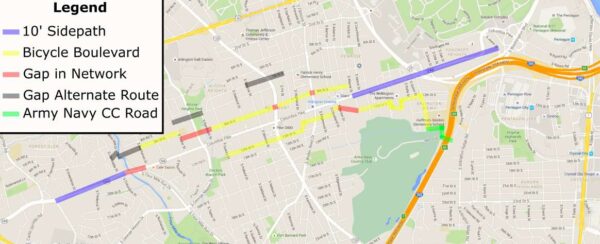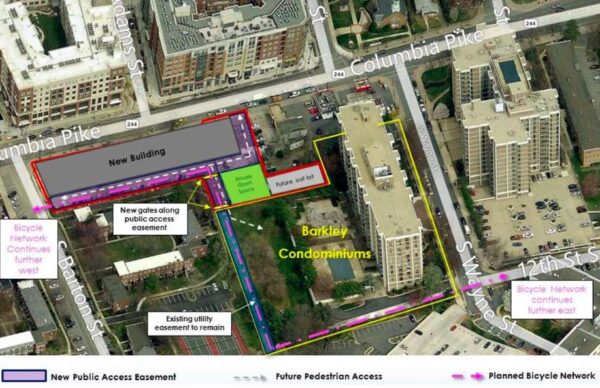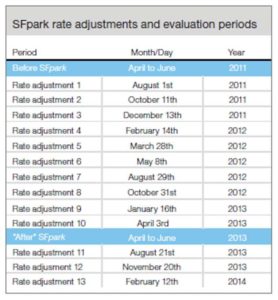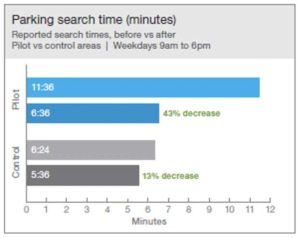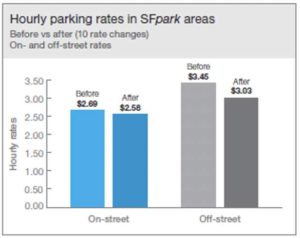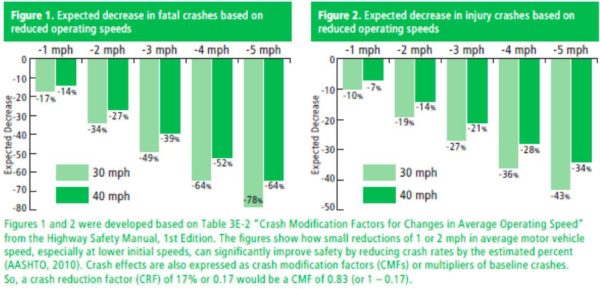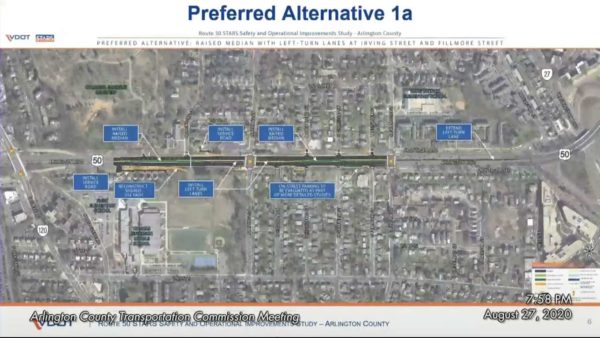 Modern Mobility is a biweekly opinion column. The views expressed are solely the author’s.
Modern Mobility is a biweekly opinion column. The views expressed are solely the author’s.
Columbia Pike is one of Arlington’s least bike-friendly corridors — there aren’t any bike lanes, traffic is heavy, and the bike boulevards on parallel streets are disjointed and disconnected.
Almost 3 years ago now, Bike4ThePike rode to highlight this fact, along with the gaps in the County’s plans for the Pike.
Today, we have a big opportunity to close ones of those gaps, but the County’s going to need some help to do it.
Three years ago, this is what the map looked like for the County’s planned bike facilities along the Pike.
We’ve made some progress — the sidepath on the bridge over Four Mile Run will be widened this year. The Complete Streets project on Walter Reed Drive is moving forward and is likely to add a traffic light at 9th Street S to create a safe crossing there for bike boulevard users — but the North side still has a fair number of gaps.
With the completion of the new section of 12th Street S between Rolfe and Ross Street, built by the Trove development, the south-side Bike Boulevard only has one major gap remaining — Barton to Wayne Street.
The redevelopment project at 2400 Columbia Pike (which includes the current Rappahannock Coffee building, among others) offers an opportunity to finally bridge this gap, but it will require help from the developer, the County and the Barkley Condominiums. This development was originally approved in 2016, but is back undergoing review with some revisions.
The Form-based Code requires this development to have an east-west alley. Since this alley would serve only traffic from this one building, it could, if designed well, function as a quiet, low-stress place to bike much like the rest of the Columbia Pike Boulevards. However, the alley itself only goes as far east as this development does — it wouldn’t connect to Wayne Street.
It was noted during the last review of this project that a connection could be possible to Wayne via the construction of a small stretch of trail on property owned by the Barkley Condominiums; part of this land already has a utility easement granted to the County for some buried utilities. There are certainly many routes that such a trail could take, but here is one potential alignment that was shown the last time this development was reviewed (pink dashed line):
Why might Barkley Condominiums want to grant such an easement? Here are a few thoughts:
- It was noted during the last review of this project that the condo residents have been using the existing alley to walk from the back of their condo building to the Pike, despite having no legal easement to do so. It was also noted that the Condo building has relied on the existing private alley to provide access to maintenance crews to complete work on the rear of their property such as landscaping; again, without the legal right to do so. The trail could provide a safer, more pleasant, and legal access route for both condo residents and maintenance crews to access this side of the building.
- Generally, trails are a sought-after amenity that raise property values. In this instance, the County would be constructing and maintaining the trail. The Barkley would simply need to provide legal access to the land. The land that already has the utility easement over it isn’t useful for much of anything else anyway.
- Being a good neighbor. This is one problem on the Pike, that is extremely difficult to solve without the Barkley’s assistance. If we don’t fix this now, people who want to bike here will be relegated to the narrow sidewalks of the Pike or mixing it up with heavy Pike traffic for the foreseeable future, barring a joint redevelopment of two gas stations and Bob & Edith’s diner (please no!).
This sort of trail easement isn’t unprecedented — the Four Mile Run Trail runs behind the Brittany and the Carlton Condominiums along Four Mile Run Drive, on land that appears to be owned by the Condo Associations, presumably in a similar easement.
I think it’s important that everyone involved know that this gap in the bike network is important to citizens along the Pike. If you support a bike-able Columbia Pike and would like to see the Rappahannock Developer, the County and the Barkley Condominiums come together to solve it, please consider signing this petition that Sustainable Mobility for Arlington County launched yesterday. You can also ask the developer about the biking experience in their proposed alley at this virtual meeting tonight at 7 p.m. about the development proposal.
Chris Slatt is the current Chair of the Arlington County Transportation Commission, founder of Sustainable Mobility for Arlington County and a former civic association president. He is a software developer, co-owner of Perfect Pointe Dance Studio, and a father of two.


